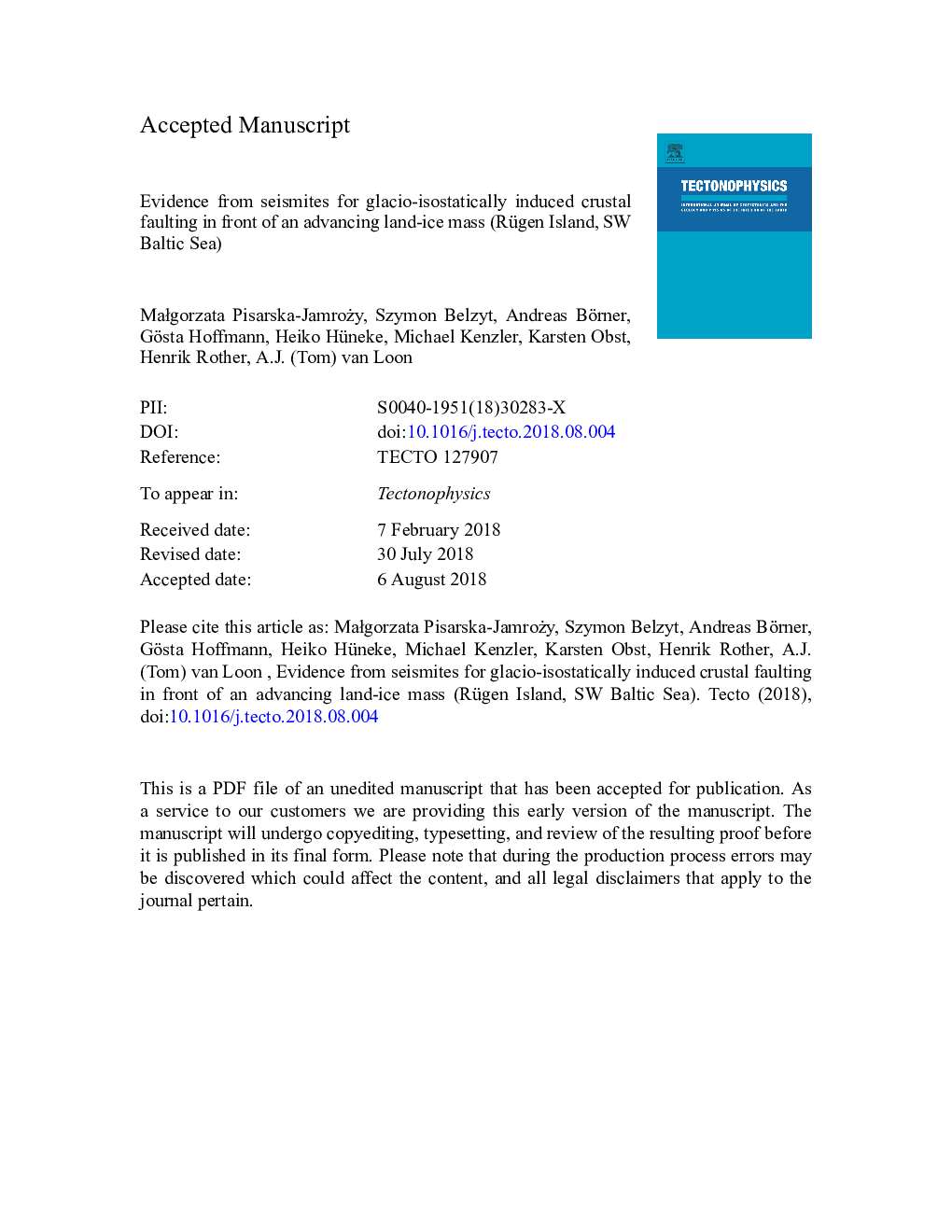| Article ID | Journal | Published Year | Pages | File Type |
|---|---|---|---|---|
| 9528383 | Tectonophysics | 2018 | 49 Pages |
Abstract
It is hitherto commonly thought that earthquakes triggered by geologically rapid changes in the pressure caused by the fluctuating extent of thick land-ice masses occur exclusively during ice retreat. Our study of deformed sediment layers within an undeformed glaciolacustrine and glaciofluvial succession exposed in a coastal cliff on Rügen Island, south-western Baltic Sea, challenges this widespread idea. Based on their structural and deformational features, the layers under investigation are interpreted as seismites which formed as a result of seismically-induced liquefaction. The stratigraphic context aided by optically stimulated luminescence (OSL) dating indicate that the documented seismites must have formed shortly before the front of the Pleistocene Scandinavian Ice Sheet reached the study area during the Last Glacial Maximum, thus during a stage of ice advance. This implies that the flexural isostatic response of the Earth's crust as a consequence of the ice load during ice advance was accompanied by earthquakes probably due to local re-activation of pre-existing faults. The crustal response to an increasing ice load was consequently less gradual than previous studies about glaciation-related tectonics suggest.
Related Topics
Physical Sciences and Engineering
Earth and Planetary Sciences
Earth-Surface Processes
Authors
MaÅgorzata Pisarska-Jamroży, Szymon Belzyt, Andreas Börner, Gösta Hoffmann, Heiko Hüneke, Michael Kenzler, Karsten Obst, Henrik Rother, A.J. (Tom) van Loon,
